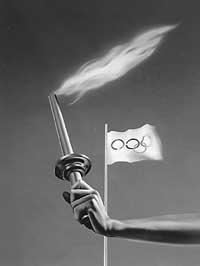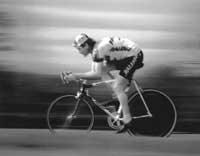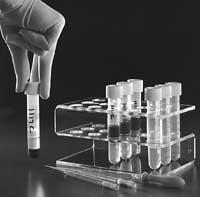Blood Transfusions and Doping
As doping detection methods or tools have been developed, new ways have been created to improve performance without resorting to them. Among them we have blood transfusions. Although it seems like a new method, the first traces appeared in the 1970s. However, the difficulty of demonstrating whether this method has been used or not makes it always a topical issue, so it currently appears on the doping list published by the Medical Committee of the International Olympic Committee.

In the Spanish state the law of sport establishes that blood doping is the ingestion of blood or any product containing hematis. They say this is well known among athletes, as we said before. But is this practice really beneficial for the performance of the athlete?
Physiological foundations
The role of ATP in muscle contraction is key. Each muscle fiber contains thousands of myofibrils inside, each of which has about 3,000 actin filaments and 1,500 myosin filaments. The myosin head has ATPase activity so upon contracting, this head will be able to obtain the energy needed to contract by breaking ATP. However, the amount of ATP in the muscle fiber serves for a contraction of 1 second, so to maintain the effort it is necessary to produce more ATP. To obtain the new ATP it is associated with ADP Pi which is formed as a result of its degradation, but this process, despite its simplicity, needs energy.
95% of the energy used to maintain long contractions is obtained by oxidative metabolism, this process being much more effective if the amount of O 2 is sufficient. Therefore, as O 2 is necessary in these metabolic processes, if we increased the transport of O 2 to the muscle that is contracting, the strength of this muscle would also increase. Thus we can understand the value of blood transfusions in sport.
Or 2 carries most of it tied to hemoglobin in red blood cells. Therefore, an increase in the number of red blood cells by a blood transfusion will increase the carrying capacity of O 2. Polyglobulia (increased red blood cell count) caused by blood transfusions greatly increases the amount of O 2 used in exercise.
Blood transfusions

Two types of blood transfusions are used: autologous and homologous. In the first, the person who gives and receives the blood is the same and in the second, the blood taken in the transfusion is donated by another person. Today, in the face of the expansion of AIDS, hepatitis and other infectious diseases, the most widely used method in sport is autologous blood transfusion.
If you want to use this type of doping, it is usually performed phlebotomy (insertion of syringe into the vein) to the athlete and 2-3 blood units (1-1.5 liters) are obtained. Blood is collected in plastic bags always asepsis and in closed system to prevent bacterial contamination. Because red blood cells are the ones that interest us in this process, blood is separated into the components and then red blood cells are stored properly. If you want to store red blood cells for more than three weeks, to maintain your carrying capacity of O2 a glycerol solution will be used for freezing erythrocytes. After having phlebotomy, the athlete needs 3-4 weeks to normalize the number of red blood cells.
Between 1 and 7 days before the competition, the stored red blood cells thaw, dissolve in the physiological serum and put the athlete back in. In it, when the competition arrives, the number of red blood cells of the athlete is greater and with it the ability to transport O2 to the muscle that is contracting.
Effects of blood transfusions in sport
According to the above, polyglobulia obtained through blood transfusions facilitates aerobic metabolism, increasing the strength of the athlete. The increase in this aerobic force could mean maintaining the effort for longer, so the best results with this method can be achieved in subsistence sports such as cycling, cross or marathon. The work of several researchers shows that after a transfusion of 400 ml of red blood cells, in a time of 10 kilometers an improvement of one minute can be achieved and, after 800 ml of use, the time necessary for the strength of the athlete is about to be exhausted in a race would increase by 23%. Therefore, lately many athletes, especially cyclists, have tried to achieve the same result by doing their training at high altitude.

The shortage of O2 at high altitudes increases red blood cell production. But the results obtained with this training, although more physiological, are difficult to maintain at the time of the race, while with blood transfusion, the rise of hemoglobin can be applied to certain competitions.
However, we cannot forget that blood transfusions are a treatment. It is used when there is blood loss or strong anemias. However, it can cause problems in healthy people. These adverse effects may be more severe depending on the type of transfusion used.
In the case of a homologous blood transfusion, the characteristics of the donor's blood and the recipient's blood must be properly analyzed to determine whether they are compatible or not. Being the ABO groups and the Rh factor most important among all the characteristics of the blood, these are the ones to check before. However, even if the blood is compatible, it can produce immune reactions (from fever or itching to anaphylactic shock) from non-autologous blood transfusion (0%-5%) in the receptor. Along the same lines, many infectious diseases can be transferred through the blood, especially AIDS or hepatitis.
As for the autologous blood transfusion, it is clear that it is much safer for the athlete, since the blood he receives is his own. But on the other hand, although the immune problems are scarcer, we cannot forget that the materials used throughout the process (needles, extraction material, blood collection bags, etc.) or the chosen technique can cause problems. For example, improper blood processing or failure to reintroduce blood can lead to infections or immune reactions.
Blood doping detection
The aim of doping control has always been to detect external substances. As doping detection methods progress, new doping types appear that are left out of detections. Detection, without a doubt, for the researcher of substances extracted from the organism (anabolic, exciting, analgesic, etc.) The most obvious difficulty in detecting blood doping is its ease. On the other hand, the current doping control is based on the analysis of urine samples taken after competition or during training. Therefore, transformations in the blood are hardly remarkable, as blood samples are essential for this. However, despite the proper method and the use of blood samples, the chances of detecting the use of blood transfusions are scarce.

In the case of a homologous blood transfusion, as the blood enters from another person, we can find in the blood circulation of the athlete a small amount of foreign red blood cells. However, this amount is usually very small (8-10% after transfusion of a blood unit) so screening techniques should be very accurate. These techniques are based on the detection of the differences between the athlete's own blood group and the blood group corresponding to the red blood cells ingested. The appearance of red blood cells with different antigens suggests that this athlete has taken blood from another person.
When blood transfusion is autologous, the chances of realizing it are much lower. Since the blood entered belongs to the athlete himself, the antigens that have all red blood cells are the same. Therefore, the only methods we can use today are indirect. Although the blood is from the athlete, blood transfusion produces some physiological transformations. Therefore, to face this doping we must take advantage of these transformations. For example, transfusion increases the rate of hemoglobin by inhibiting endogenous production of erythropoietin. On the other hand, transfused red blood cells, due to all the processes suffered, are weaker and break faster. Therefore, after exercise the levels of iron and bilirubin rise a lot in the serum. However, it is usually very difficult to prove that these transformations are related to blood transfusion.
As we know, using blood transfusions can extend the duration of exercise. Therefore, all international sports organizations have included this practice in their doping lists. But we are still far from knowing to what extent this technique is widespread among athletes. The development of detection methods and the dissemination of information on this subject can be ways of solving in the future.
Buletina
Bidali zure helbide elektronikoa eta jaso asteroko buletina zure sarrera-ontzian











